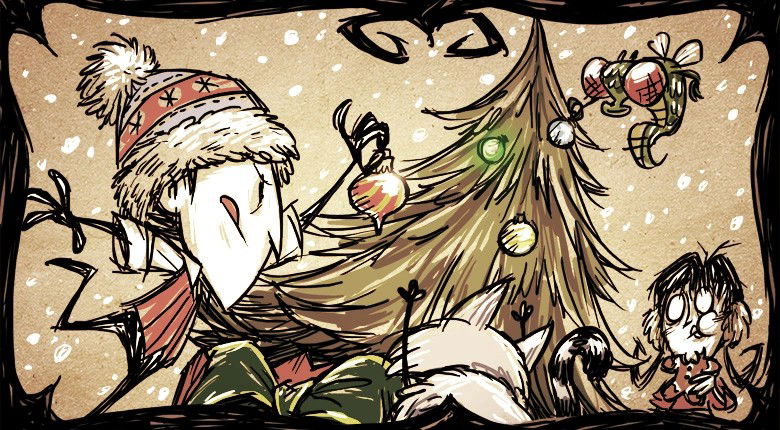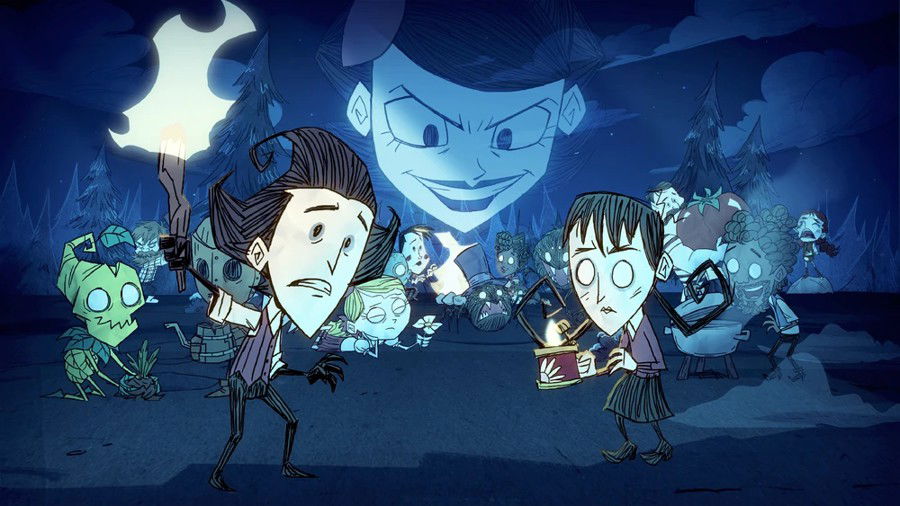Survival games are a phenomenon among gamers. From battle royales like Day Z, where you have to survive and fight off zombies, to games like The Forest, where you survive on an island after a plane crash, or the excellent Timberborn. Using your skills to stay alive while facing the forces of nature is an ever-present challenge for gamers.
One of the most notable survival games is Don’t Starve (official website). Your mission is simply not to starve! This might sound easy, but it really isn’t. Don’t Starve places you in a world full of monsters, magic, and deadly darkness: the world of Constant.
Constant is a world fully controlled by the magician Maxwell and his associate, Charlie. Monsters roam the land, seasons change drastically, and resources like wood are limited. On top of that, shadow monsters powered by nightmares attack those who go insane, darkness kills those unprepared, and you constantly need to hunt for supplies to stay alive.
If you’re struggling to survive, here are 10 essential tips to avoid starving. If you have questions, leave a comment.
Explore the Entire Map
As soon as the sandbox world loads, start exploring. Pick a direction and run, uncovering as much of the map as you can. On larger maps, it can take almost two in-game weeks to loop around the perimeter. However, by the end, all biomes should be at least partially revealed, letting you identify where resources are located and where it might be best to set up a base.

In Shipwrecked DLC worlds, never stop moving and exploring among the islands. Rarely does one island contain all resources. These maps are also heavily impacted by seasons, making it even more critical to gather loads of resources early on when it’s safer to do so.
Dismantle Outdated Machines and Structures
Once you’ve upgraded a machine, it performs all the same functions as its predecessor. To save space, dismantle the older machine and reclaim about half of its materials.
This tip also applies to natural structures that can be crafted, like Pig Houses and Bunny Hutches. Use a hammer to destroy them for materials after defeating the inhabitants. Likewise, Beehives can provide resources to craft Bee Boxes, and Level 3 Spider Dens drop Spider Eggs, which you can move to a more convenient farming location.
Manage Finite Resources Wisely
Certain resources like flowers, trees, mushrooms, and surface rocks are technically finite. If players exhaust all of them, there’s no natural way to replenish them. However, most of these resources can be made renewable with some effort. For instance: plant flowers using captured butterflies, replant tree seeds, harvest mushrooms only when fully grown, trade items with the Pig King for gold (if available), or enable caves in the world.
One exception is tentacles, which are fully finite unless playing as Wickerbottom, who can use the book On Tentacles. Be cautious with Berry Bushes, Saplings, and Grass Tufts, as they can be lost permanently. Without caves enabled, there’s no way to regenerate Clockwork Pieces to obtain Gears, making you rely solely on Tumbleweed spawns.
Prepare Emergency Plans
Having backup plans is essential for survival. Each Touch Stone provides an extra life, but returning to base can be difficult if you’re unprepared. Placing a chest near Touch Stones with supplies to survive in all weather conditions is highly recommended. Meat Effigy serves as another revival method but reduces your maximum health, while Amulets take up the chest slot.

Always keep emergency light, warmth, and food supplies handy. Stockpiling materials ensures you can craft a replacement if something critical like armor or tools breaks. Keeping multiple light sources, ways to restore sanity, and methods of producing food is a smart way to prepare for seasons or surprises.
Build a Reliable Food Source
Scavenging small food sources like carrots, jellyfish, or clams will not sustain you for long. Cooking food always provides better benefits than raw food, and preparing meals with a Drying Rack or Crock Pot can add extra perks or negate downsides.
Building a consistent, renewable food supply is essential. Install an Ice Box to keep food fresh longer, develop farms, and set traps for rabbits, crabs, spiders, frogs, or other small creatures. Fishing rods, nets, and spears can let you raid additional food sources like water creatures or Pig Villages. Once a sustainable system is in place, starving will be the least of your problems.
Set Up Proper Bases
The base setup depends on the DLC you’re playing. For Reign of Giants or Don’t Starve Together, establishing a mainland base is better than using a Shipwrecked island that floods and ruins your setup. Meanwhile, underground bases require careful planning to avoid losing sanity and ensure food production is sustainable.
The Hamlet character heavily emphasizes homebuilding mechanics over traditional bases, but having a centralized location is essential in any expansion. Bases provide space to store materials, prepare meals, and keep safe from looming threats like darkness.
Anticipate Seasons and Prepare
The first week of any season is the safest, but conditions worsen as time passes. Stockpile enough food, craft appropriate gear, and have basic supplies on hand to adapt when seasons change. Failing to prepare is dangerous, especially when winter arrives, and you’re without food or warm clothing.
Each season presents unique challenges. Some are ideal for fortifying your base and completing routine tasks. Others are perfect for exploring the map and gathering plenty of resources to store for the hard days ahead. Plan carefully and stay ahead of environmental risks.
Learn Hit-and-Run Strategies
Kiting is a critical combat technique in Don't Starve. Attack an enemy with a few hits, then retreat before it can strike back. Even Wes, one of the weakest characters, can excel with good movement and timing.
Fast enemies like Merms are harder to kite, but slower creatures like Treeguards make it easier to practice. Mastering kiting saves health and resources, allowing you to avoid damage entirely while conserving healing items.
Save Crafted Items for Later Use
Many crafted items, especially structures, can be placed directly into the world once finished. When you click outside this placement without deciding where to put it, the item is stored in the crafting tab for later use.
This allows you to carry extra structures without occupying inventory space. It’s particularly useful in Adventure Mode where item transport is limited. Keeping items in the crafting tab can also speed up base-building when you progress to new levels.
Adapt to Your Character’s Strengths
Each character has unique advantages. Wilson grows a beard, giving him free access to Beard Hair, a resource that other characters can only obtain by experiencing low sanity encounters. Wigfrid and Wolfgang excel in combat. Wendy has her ghostly sister, who can fight alongside her.

Even Wes, designed to offer a greater challenge, can be used effectively. The variety of characters allows for many different playstyles, so select one that matches your preferences for an ideal experience. Playing according to their strengths helps shape your game, improving survival and efficiency.
Let us know in the comments if these tips help you survive or if you’ve got additional advice for fellow players.












— Comments 0
, Reactions 1
Be the first to comment